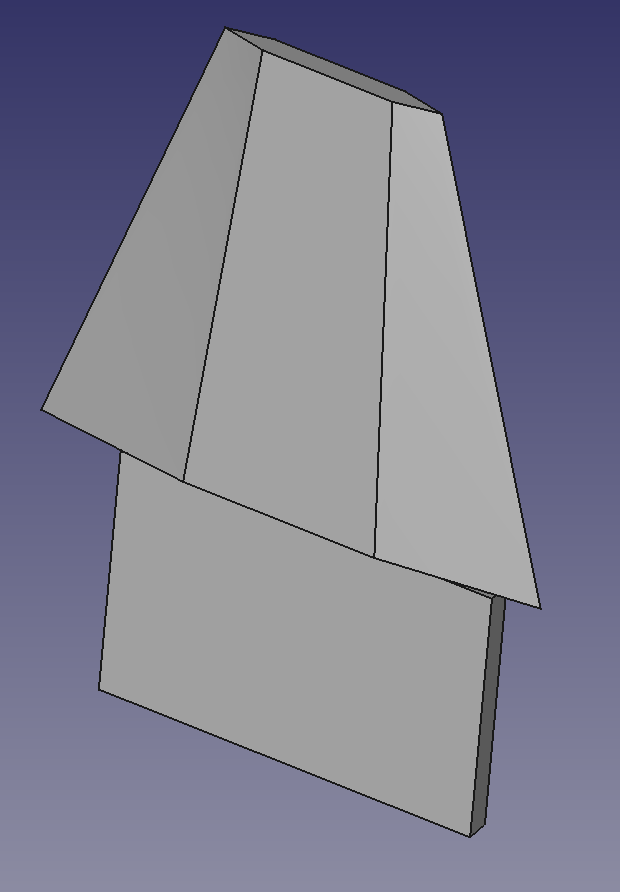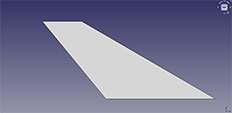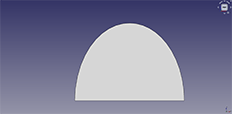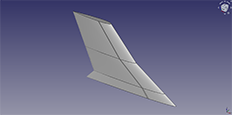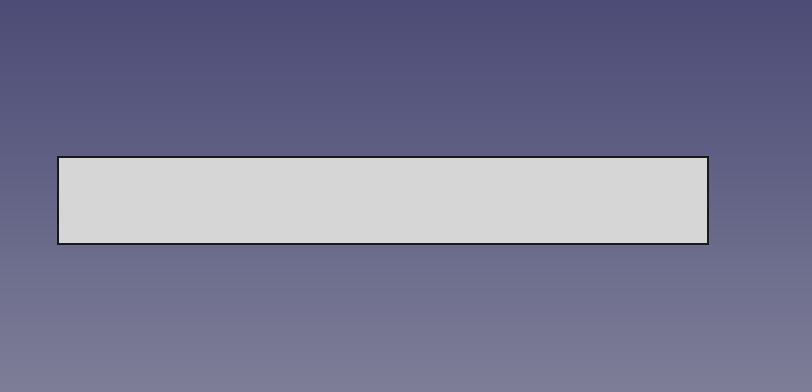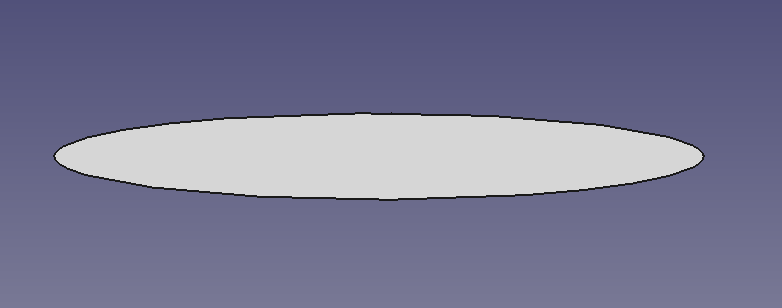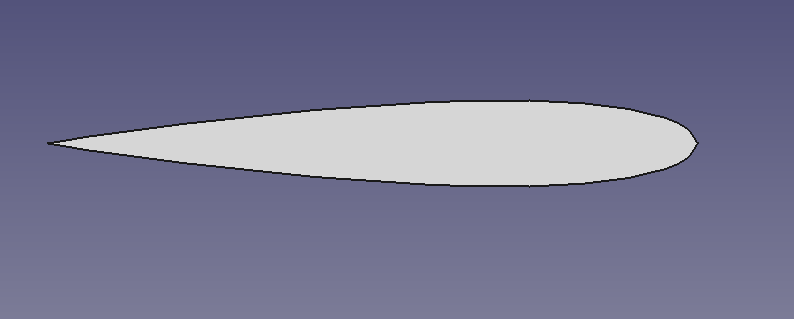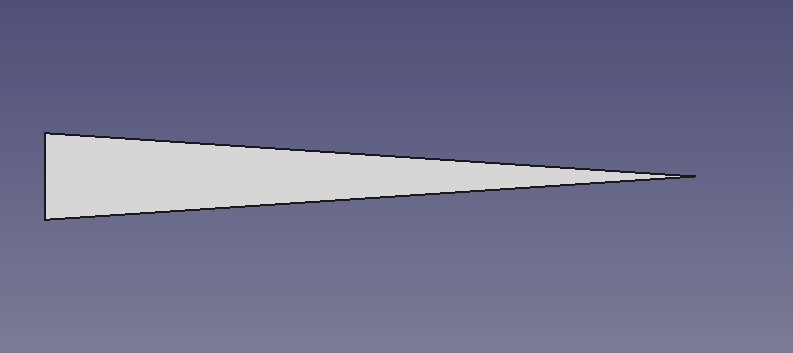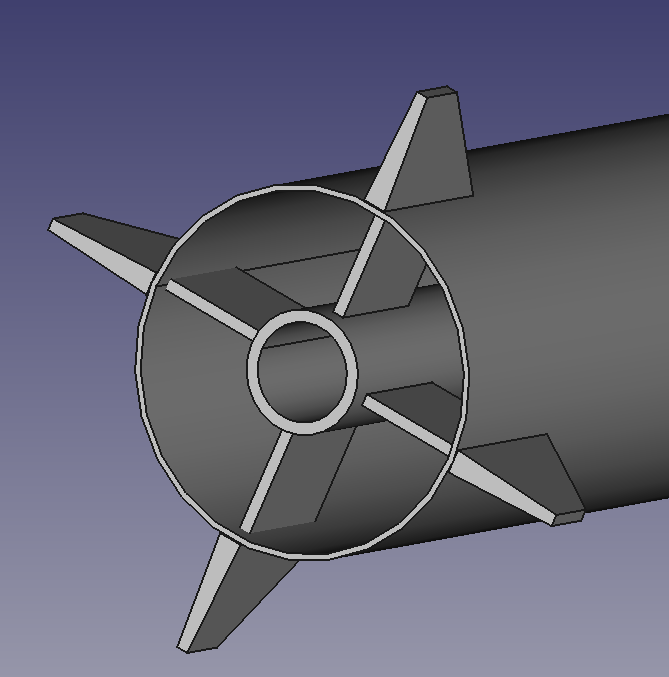Rocket Fin/pl
|
|
| Lokalizacja w menu |
|---|
| Rakieta → Płetwa |
| Środowisko pracy |
| Rakieta |
| Domyślny skrót |
| brak |
| Wprowadzono w wersji |
| 0.19 |
| Zobacz także |
| brak |
Opis
Płetwy służą do aerodynamicznej kontroli kierunku lotu.
Płetwa zwężana z wypustką TTW
Użycie
- Istnieje kilka sposobów wywołania polecenia:
- Naciśnij przycisk
Płetwa.
- Wybierz opcję Rakieta →
Płetwa z menu.
- Kliknij dwukrotnie obiekt Płetwa w widoku drzewa.
- Naciśnij przycisk
- Ustaw opcje i naciśnij OK.
Opcje
Typ płetwy
Ogólny kształt płetwy.
- Trapezoidalny.
Ten typ płetwy jest używany praktycznie dla wszystkich czterokątnych płetw. Podstawa pozostaje nieruchoma, ale krawędzie przednia i tylna mogą mieć zmienny kąt natarcia. Długość cięciwy u podstawy i na końcu płetwy jest ustawiana niezależnie.
Trapezoidalny typ płetwy
- Eliptyczny.
Uogólniony, zaokrąglony kształt. Płetwy okrągłe są szczególnym przypadkiem, gdy wysokość wynosi połowę długości cięciwy podstawy.
Eliptyczny typ płetwy
- Własny.
Większość płetw będzie pasować do jednego ze standardowych kształtów. W przypadkach, gdy tak nie jest, można utworzyć własny kształt za pomocą szkicu.
Szkic musi zostać utworzony najpierw. Podstawa płetwy jest rysowana wzdłuż dodatniej osi X. Po zaznaczeniu szkicu w drzewie modelu, wybranie ikony Płetwa spowoduje utworzenie niestandardowej płetwy. Profil płetwy można wtedy zmienić.
Nie ma możliwości powiązania niestandardowej płetwy ze szkicem w oknie dialogowym po jej utworzeniu, dlatego ważne jest, aby szkic stworzyć najpierw. Szkic można wybrać z widoku Właściwości. Aktualizacja szkicu spowoduje aktualizację płetwy.
Szkic użyty do stworzenia niestandardowego kształtu płetwy
Niestandardowa płetwa utworzona na podstawie szkicu
Przekrój poprzeczny
Kształt przekroju poprzecznego płetwy może znacząco wpływać na jej osiągi przy różnych prędkościach, a także na wygląd rakiety. Zaimplementowano różne przekroje płetw. Płetwy tworzy się poprzez przeciąganie po profilach przekroju podstawy do przekroju końcówki, więc nie wszystkie kombinacje Przekroju podstawy i Przekroju końcówki dadzą użyteczne płetwy.
- Kwadratowy. Zarówno krawędź natarcia, jak i krawędź spływu są kanciaste.
Przekrój kwadratowy
- Zaokrąglony. Krawędzie natarcia i spływu są zaokrąglone.
Przekrój zaokrąglony
- Profil lotniczy. Wykorzystuje symetryczny profil NACA z maksymalną grubością w 30% długości cięciwy.
Przekrój w postaci profilu lotniczego
- Klin. Krawędź spływu płetwy jest prosta, a krawędź natarcia zwęża się do punktu.
Przekrój w postaci klina
- Diamentowy. Kształt diamentowy zaczyna się od punktu na krawędzi natarcia, prosto do maksymalnej grubości w miejscu określonym przez Długość 1, a następnie wraca do punktu na krawędzi spływu.
Przekrój diamentowy
- Zwężenie krawędzi natarcia (LE). Krawędź natarcia jest zwężona do punktu zgodnie z wartością Długość 1.
Przekrój w postaci zwężenia krawędzi natarcia
- Zwężenie krawędzi spływu (TE). Krawędź spływu jest zwężona do punktu zgodnie z wartością Długość 1.
Przekrój w postaci zwężenia krawędzi spływu
- Zwężenie. Krawędź natarcia jest zwężona do punktu zgodnie z wartością Długość 1, a krawędź spływu jest zwężona do punktu zgodnie z wartością Długość 2.
Przekrój w postaci zwężenia
Wypustki przez ściankę (TTW)
Płetwy typu przez ścianę (TTW) zwiększają wytrzymałość konstrukcyjną, poprzez przechodzenie przez zewnętrzną rurę korpusu do wewnętrznej rury korpusu, takiej jak mocowanie silnika. Zamiast przymocowania jedynie do zewnętrznej powierzchni zewnętrznej rury korpusu, płetwa może być mocowana w kilku punktach. Wysokość wypustki odpowiada odległości między średnicą zewnętrzną wewnętrznej rury korpusu a średnicą zewnętrzną zewnętrznej rury korpusu. Pozostałe parametry mogą się różnić w zależności od wymagań.
4 płetwy przez ścianę przymocowane do centralnego mocowania silnika wewnątrz zewnętrznej rury korpusu
Właściwości
Płetwa
- DANETyp płetwy: Definiuje kształt płetwy.
- DANEWysokość: Wysokość płetwy.
- DANEProfil: Szkic powiązany z niestandardowym typem płetwy.
- DANECięciwa podstawy: Odległość między krawędzią natarcia a spływu u podstawy płetwy.
- DANEPrzekrój podstawy: Kształt przekroju płetwy u podstawy, patrz Opcje.
- DANEDługość podstawy 1: Zastosowanie zależy od Przekroju podstawy płetwy i odnosi się do długości zwężenia lub podobnej, patrz Opcje.
- DANEDługość podstawy 2: Zastosowanie zależy od Przekroju podstawy płetwy i odnosi się do długości zwężenia lub podobnej, gdy wymagane są wartości wielokrotne, patrz Opcje.
- DANEProcent podstawy: Wyraża właściwości Długość podstawy 1 i Długość podstawy 2 jako procent cięciwy podstawy.
- DANEGrubość podstawy: Maksymalna grubość u podstawy płetwy.
- DANEKąt wznosu: Kąt przedniej krawędzi płetwy, gdzie krawędź pionowa to 0 stopni. Może być ujemny. Ustawienie tej wartości powoduje dostosowanie Długości wznosu.
- DANEDługość wznosu: Odległość od przedniej krawędzi podstawy płetwy do przedniej krawędzi końcówki wzdłuż osi X. Może być ujemna. Ustawienie tej wartości powoduje dostosowanie Kąta wznosu.
- DANECięciwa końcówki: Odległość między krawędzią natarcia a spływu na końcówce płetwy.
- DANEPrzekrój końcówki: Kształt przekroju płetwy na końcówce, patrz Opcje.
- DANEDługość końcówki 1: Zastosowanie zależy od Przekroju końcówki płetwy i odnosi się do długości zwężenia lub podobnej, patrz Opcje.
- DANEDługość końcówki 2: Zastosowanie zależy od Przekroju końcówki płetwy i odnosi się do długości zwężenia lub podobnej, gdy wymagane są wartości wielokrotne, patrz Opcje.
- DANEProcent końcówki: Wyraża właściwości Długość końcówki 1 i Długość końcówki 2 jako procent cięciwy końcówki.
- DANEGrubość końcówki: Maksymalna grubość na końcówce płetwy.
- DANETTW: Wartość prawda, jeśli wymagana jest wypustka typu przez ścianę (TTW), patrz Opcje.
- DANEWysokość TTW: Wysokość wypustki TTW.
- DANEDługość TTW: Długość wypustki TTW.
- DANEPrzesunięcie TTW: Odległość od przedniej krawędzi płetwy do przedniej krawędzi wypustki TTW.
- DANEGrubość TTW: Grubość wypustki TTW.
Komponent rakiety
Te parametry podano wyłącznie dla informacji i nie mają wpływu na projektowanie komponentu.
- DANEOpis: Opis komponentu
- DANEProducent: Producent, jeśli znany
- DANEMateriał: Materiał, jeśli znany
- DANENumer katalogowy: Numer katalogowy producenta
Poradniki i nauka
Rocket Workbench Fins Poradnik na YouTube
- Jak zacząć
- Instalacja: Pobieranie programu, Windows, Linux, Mac, Dodatkowych komponentów, Docker, AppImage, Ubuntu Snap
- Podstawy: Informacje na temat FreeCAD, Interfejs użytkownika, Profil nawigacji myszką, Metody wyboru, Nazwa obiektu, Edytor ustawień, Środowiska pracy, Struktura dokumentu, Właściwości, Pomóż w rozwoju FreeCAD, Dotacje
- Pomoc: Poradniki, Wideo poradniki
- Środowiska pracy: Strona Startowa, Złożenie, BIM, CAM, Rysunek Roboczy, MES, Inspekcja, Siatka, OpenSCAD, Część, Projekt Części, Punkty, Inżynieria Wsteczna, Robot, Szkicownik, Arkusz Kalkulacyjny, Powierzchnia 3D, Rysunek Techniczny, Test Framework
